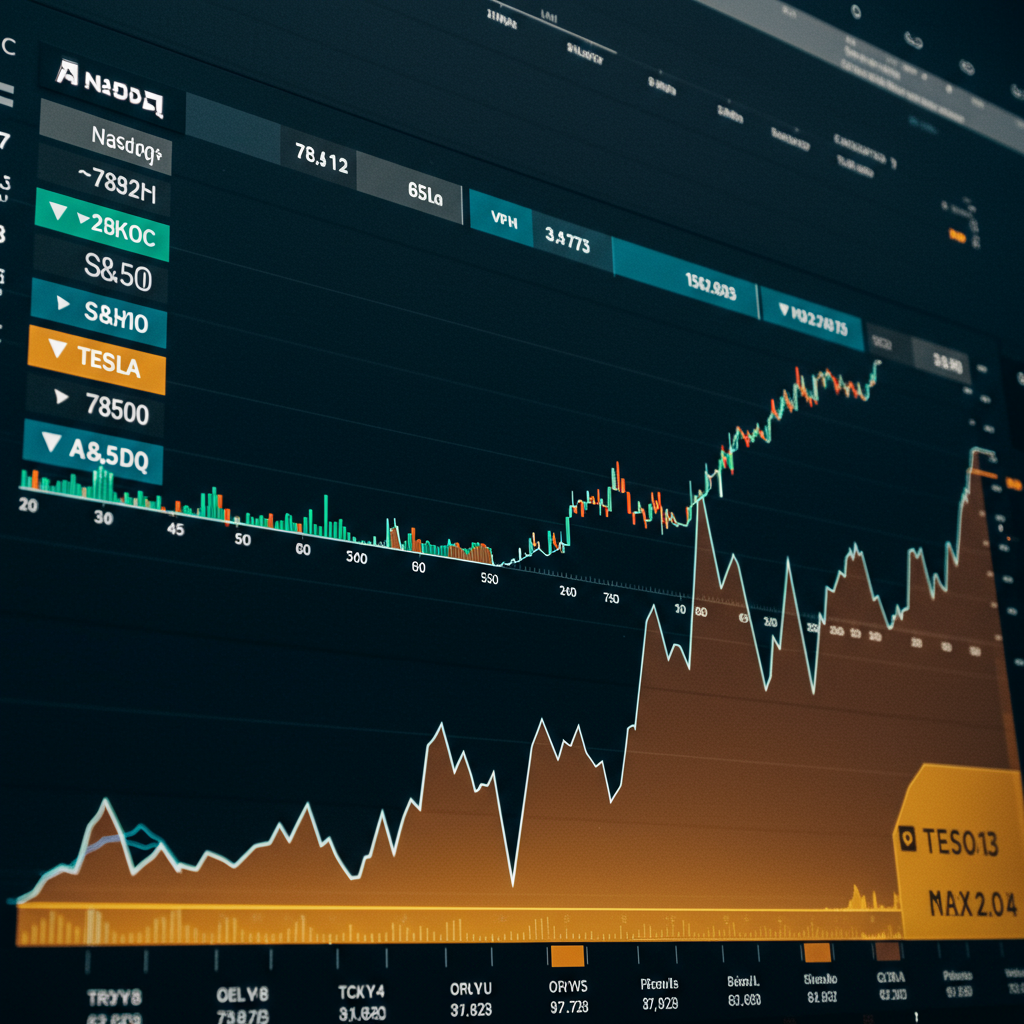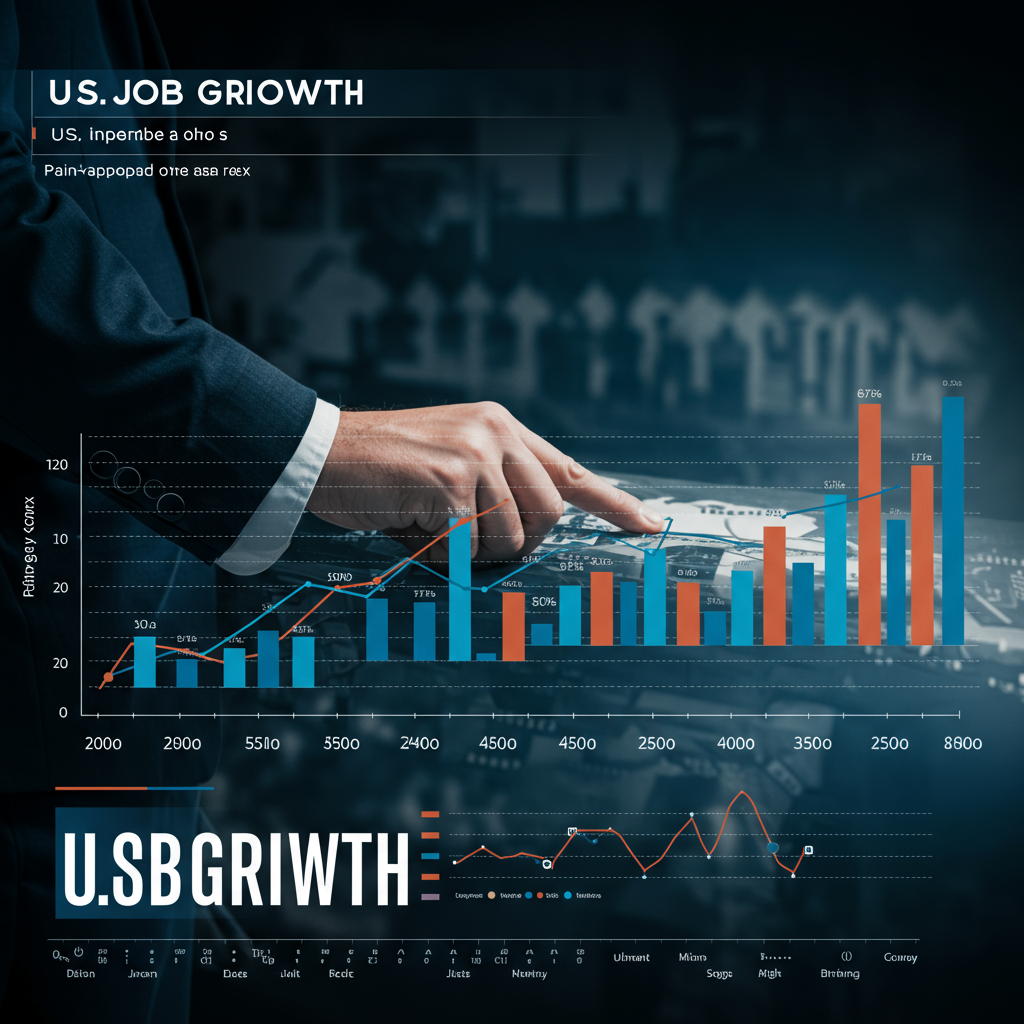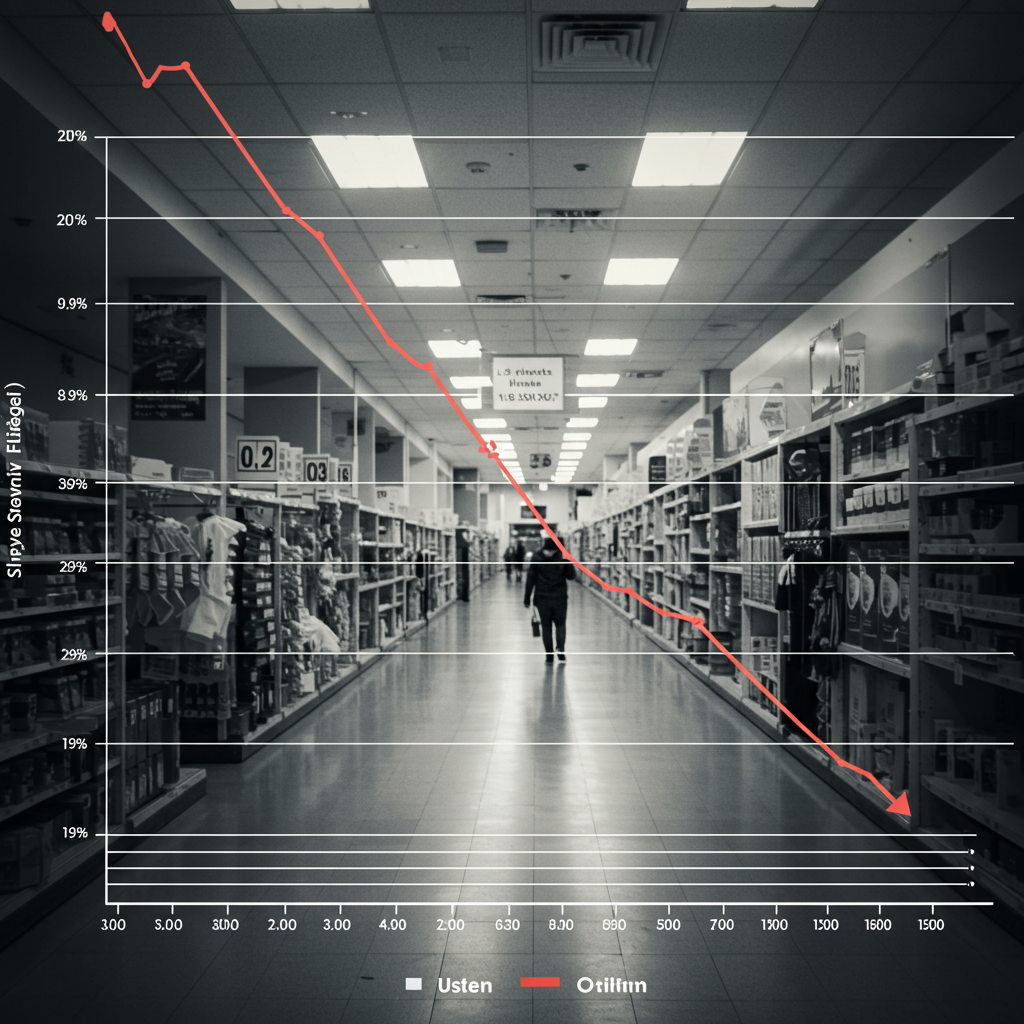Global financial markets experienced a thrilling day of contrasts and monumental shifts, largely fueled by a blockbuster artificial intelligence (AI) partnership. On Monday, October 6, 2025, the tech-heavy Nasdaq Composite and the broader S&P 500 climbed toward record finishes, showcasing robust investor optimism despite underlying economic uncertainties. However, the Dow Jones Industrial Average saw a slight dip, reflecting the mixed sentiment. The undeniable star of the day was chipmaker AMD, whose stock soared following a groundbreaking deal with OpenAI, igniting the entire AI sector and creating ripples across the tech landscape. Meanwhile, investors also tracked cryptic Tesla news, rising gold prices, and significant global political developments, all shaping a truly dynamic market narrative.
The AI Revolution Takes Center Stage: AMD’s Monumental Deal
The primary catalyst driving Monday’s market exuberance was a landmark multi-year collaboration between Advanced Micro Devices (AMD) and AI powerhouse OpenAI. This strategic alliance is poised to redefine the competitive landscape of the burgeoning AI chip industry.
AMD’s OpenAI Partnership: A Game Changer
Under the terms of this pivotal agreement, AMD is set to become a crucial supplier of advanced AI chips to OpenAI. Projections suggest this deal could generate tens of billions of dollars in annual revenue for AMD, marking a significant win for the company. Furthermore, the partnership includes a unique provision granting OpenAI the option to acquire up to 10% of AMD’s equity through penny options. This substantial agreement triggered an astonishing surge in AMD’s stock price, which climbed between 25% and 38% at market open. This phenomenal performance added over $100 billion to AMD’s market capitalization, cementing its position as one of the most impactful single-day gains in the company’s four-decade history. The sheer scale of the deal, involving “upward of 6 gigawatts of GPUs,” underscores the immense demand for specialized hardware driving the artificial intelligence boom.
Reshaping the AI Chip Landscape
This collaboration is widely viewed as a direct challenge to Nvidia (NVDA), which currently holds a dominant position in the AI chip market. The intensified competition is expected to accelerate crucial data center buildouts worldwide, as companies race to bolster their AI infrastructure. The positive sentiment around this AI market surge extended well beyond AMD. Other prominent semiconductor stocks, including Applied Materials (AMAT), Micron (MU), and TSM, all saw gains exceeding 2%. As Louis Navellier, chief investment officer of Navellier & Associates, highlighted, “the AI narrative continues to gain momentum,” fueling investor confidence in the sector’s long-term growth prospects. This collective uplift in chip stocks underscores the profound impact of AI advancements on the broader tech economy, even as Nvidia experienced a modest decline of about 1% on the news.
Broader Market Movements Amid Economic Uncertainty
While the AI stock market demonstrated remarkable strength, the overall market picture remained nuanced, grappling with several significant macroeconomic headwinds.
Tech Sector’s Uplift and Dow’s Mixed Fortunes
Despite the Dow Jones Industrial Average facing a slight decline, both the Nasdaq Composite and the S&P 500 achieved notable advances, nearing record closes. This divergence underscored the concentrated nature of the rally, heavily tilted towards technology and AI-driven companies. The pervasive AI market surge narrative provided a strong counterbalance to other prevailing concerns, allowing tech stocks to lead the charge even as traditional industrial sectors showed less vigor. This dynamic highlights a market intensely focused on future growth opportunities within the AI domain.
The Shadow of Macroeconomic Headwinds
Adding a layer of complexity to the market’s performance was the ongoing federal government shutdown, which had entered its second week. This political impasse continued to delay critical economic data releases, including the eagerly anticipated monthly jobs report, leaving investors “flying blind.” Data-starved, market participants eagerly awaited insights from non-government sources, such as the University of Michigan’s consumer sentiment report. Furthermore, upcoming speeches from Federal Reserve officials, including Governor Stephen Miran and Chair Jerome Powell, were closely watched for any signals regarding potential interest rate adjustments. The interplay between strong corporate news and persistent macro uncertainty created a delicate balance for investor sentiment.
Investor Sentiment: Bubble Fears vs. Enduring Optimism
The remarkable performance of the AI stock market, particularly the concentrated gains in mega-cap technology firms, naturally sparked discussions about potential market overheating.
Navigating the “Tight Rope”
Concerns about a potential stock market bubble are increasingly voiced by market strategists. Dave Sekera, Morningstar’s chief US market strategist, pointed out the significant concentration of market performance in mega-cap AI stocks. He warned that the market is “balancing a tight rope,” navigating between the exhilarating AI buildout boom and the anticipation of Federal Reserve interest rate easing, all against the backdrop of a weakening real economy. Signs of this weakening include slowing consumer consumption growth and a softening labor market. These observations highlight the critical need for investors to distinguish between genuine technological progress and potentially unsustainable valuations in certain segments.
Awaiting Earnings with Optimism
Conversely, not all market watchers share the same level of apprehension. Goldman Sachs strategist David Kostin projected a more optimistic outlook for the upcoming earnings season. He anticipated better-than-expected results for S&P 500 companies, attributing this potential strength to a robust underlying economy and the strong, continuing outlook for AI. This optimistic perspective suggests that the fundamental drivers for corporate growth, particularly in the tech sector, remain solid despite broader economic challenges.
The “Debasement Trade” Gains Momentum
Beyond the equity markets, another significant trend emerged, reflecting a different facet of investor strategy: the “Debasement Trade.”
Gold, Silver, and Bitcoin Soar to New Highs
In parallel with the equity market movements, traditional safe-haven assets like gold and silver, along with the digital asset Bitcoin, all reached record highs. This surge indicates that investors are increasingly seeking hedges against what they perceive as mounting government spending and looser monetary policies globally. Nomura Securities analyst Charlie McElligott noted that much of the developed world is pivoting towards a “Run It Hot” fiscal dominance framework. This approach involves incurring “monster deficits” in an attempt to outgrow accumulated debt, thereby devaluing currency. In this environment, gold, silver, and Bitcoin are identified as “chief winners,” benefiting from investor flight to assets seen as resistant to currency debasement.
Corporate Highlights Beyond AI Chips
While AI dominated headlines, other significant corporate developments also captured investor attention, further illustrating the multifaceted nature of the market.
Tesla’s Enigmatic Rise
Tesla news provided its own share of intrigue, with the electric vehicle giant’s stock climbing over 2%. This uptick followed a series of cryptic social media posts teasing new product reveals, strategically timed ahead of an investor conference. Speculation abounded regarding a potential new, cheaper model and the company’s continued pivot towards self-driving technology. These teasers kept investors on the edge of their seats, eagerly anticipating what Elon Musk and his team might unveil next, underscoring the power of anticipation in driving market sentiment for high-profile companies.
Palantir’s Resilience and Other Key News
Palantir (PLTR) saw a notable rebound after experiencing earlier losses. This recovery occurred despite a prior internal US Army memo highlighting “fundamental” security concerns regarding its battlefield communication upgrades, demonstrating the broader market lift impacting AI-adjacent firms. In other corporate news, Verizon (VZ) announced former PayPal CEO Dan Schulman as its new chief executive, signaling a potential new strategic direction for the telecommunications giant. The banking sector also saw significant consolidation with Fifth Third Bancorp (FITB) acquiring Comerica (CMA) for $10.9 billion, forming the ninth-largest US bank. Furthermore, Hon Hai Precision Industry Co. (Foxconn), a key server production partner for Nvidia, reported an impressive 11% growth in quarterly sales, further indicating robust underlying demand for AI chips and server infrastructure.
Global Markets Reflect Shifting Political Tides
The ripple effects of political developments were clearly visible across international markets, demonstrating how local governance can rapidly influence investor confidence.
Asia and Europe React to Political Shifts
Japan’s Nikkei stock index surged to a record high following the election of Sanae Takaichi as the next Prime Minister. Traders reacted positively, anticipating a revival of big spending and loose monetary policy under her leadership. Conversely, France’s CAC 40 index experienced a slump after Prime Minister Sebastien Lecornu’s unexpected resignation. This political uncertainty led to a weaker Euro and rising French bond yields, illustrating how abrupt political shifts can quickly undermine investor confidence and impact sovereign debt markets. These contrasting reactions highlight the sensitivity of global markets to political stability and anticipated economic policies.
Frequently Asked Questions
What caused AMD’s significant stock surge on this day?
AMD’s stock soared between 25% and 38%, adding over $100 billion to its market capitalization, primarily due to a blockbuster multi-year deal with OpenAI. Under this agreement, AMD will supply “upward of 6 gigawatts of GPUs” and other AI chips, a partnership projected to generate tens of billions in annual revenue. This news intensified competition with Nvidia in the AI chip sector and fueled broad investor optimism.
Are current AI stock valuations sustainable, or is a bubble forming?
Expert opinions are divided. While the AI market surge is undeniable, some strategists, like Morningstar’s Dave Sekera, warn of market concentration in mega-cap AI stocks and a “tight rope” walk between the AI boom, anticipated Fed easing, and a weakening real economy. Others, such as Goldman Sachs’ David Kostin, project a better-than-expected earnings season for S&P 500 firms due to a robust economy and strong AI outlook, suggesting underlying fundamental strength.
How did broader macroeconomic factors impact the market despite the AI rally?
Despite the powerful AI-driven rally, the market grappled with significant macroeconomic headwinds. The federal government shutdown, entering its second week, delayed crucial economic data like the jobs report, leaving investors “flying blind.” This uncertainty shifted investor focus to upcoming Federal Reserve signals and consumer sentiment reports. While AI optimism buoyed tech stocks, these macro concerns created a mixed market picture, with the Dow experiencing a slight decline even as the Nasdaq and S&P 500 rose.
Conclusion
Monday’s market action painted a vivid picture of a financial landscape in flux, heavily influenced by technological innovation, macroeconomic pressures, and geopolitical shifts. The AI market surge, spearheaded by AMD’s transformative deal with OpenAI, underscored the sector’s immense potential and continued ability to drive market momentum. This excitement, however, was tempered by persistent concerns over a government shutdown and the potential for an overvalued market, reminding investors of the delicate balance between growth and risk. The “Debasement Trade” gaining traction in gold, silver, and Bitcoin also signaled a deeper investor anxiety about fiscal policies. As markets navigate these complex dynamics, adaptability and a keen eye on both micro-level corporate developments and macro-level economic indicators will be paramount for informed decision-making.




